The Parthenon is a temple of the Doric order with eight columns at the façade, and seventeen columns at the flanks, conforming to the established ratio of 9:4. This ratio governed the vertical and horizontal proportions of the temple as well as many other relationships of the building like the spacing between the columns and their height.
The cella was unusually large to accommodate the oversized statue of Athena, confining the front and back porch to a much smaller than usual size. A line of six Doric columns supported the front and back porch, while a colonnade of 23 smaller Doric columns surrounded the statue in a two-storied arrangement. The placement of columns behind the statue was an unusual development since in previous Doric temples they only appeared on the flanks, but the greater width and length of the Parthenon allowed for a dramatic backdrop of double decked columns instead of a wall.
The back room sheltered Athena’s treasure and four columns of the Ionic order supported its roof. The introduction of elements of the Ionic order in a predominately Doric temple was more dramatic in the development of a continuous freeze on the exterior wall of the cella. While the integration of Doric and Ionic elements on the same temple was not a new development in Greek architecture, it was rare, and bestowed on the Parthenon a delicate balance between austere and delicate visual characteristics.
All temples in Greece were designed to be seen only from the outside. The viewers never entereda temple and could only glimpse the interior statues through the opendoors. The Parthenon was conceived in a way that the aestheticelements allow for a smooth transition between the exterior and theinterior that housed the chryselephantine statue of Athena. A visitorto the Acropolis who entered from the Propylaiawould be confronted by the majestic proportion of the Parthenon inthree quarters view, with full view of the westpedimentand the north colonnade. As the viewer moved closer, the details ofthe sculpted metopeswould become decipherable, and when in proximity to the base of thecolumns, parts of the friezewould become evident in tantalizing colorful glimpses peering fromthe spaces between the columns.
Moving towards the east and looking up towards the exterior of the cella, a visitor would be mesmerized with the masterful depiction of the Panathenaic procession as it appeared in cinematic fashion on the frieze which was visually interrupted by the Doric columns of the exterior. This was certainly a scene that every Athenian could relate to through personal experience, making thus the transition between earth and the divine asmooth one. A visitor moving east would eventually turn the corner to face the entrance of the Parthenon, and there he would be confronted with the birth of Athena high above on the east pediment, and just beyond it, the arrephores folding the peplos among the Olympian gods and the heroes of the frieze. Then, just below,the “peplos” scene, through the immense open doors, any visitor would be enchanted by the glistening gold and ivory hues of the monumental statueof Athena standing at the back of the dim cella. The statue of Athena Pallas reflected its immense stature on the tranquil surface of the water-pool floor, and was framed by yet more Doric columns, this times maller, in a double-decked arrangement that made the interior space seem as if it were even larger and taller than the exterior.
It seems certain that the master planners of the Parthenon conceived it as a theatrical event. The temple was constructed with the movements of the viewer in mind, and by the arrangement of the temple, the monumental sculptures of the pediment, and the detailed frieze, the emotions of the visitors were choreographed to prepare them for the ultimate glimpse of the majestic Athena Parthenos at the interior of the naos, and to maximize the effect of an awe inspiring visit.
The Parthenon epitomizes all the ideals of Greek thought during the apogee of the Classical era through artistic means. The idealism of the Greek way of living, the attention to detail, as well as the understanding of a mathematically explained harmony in the natural world, were concepts that in every Athenian’s eyes set them apart from the barbarians. These ideals are represented in the perfect proportions of the building, in its intricate architectural elements, and in the anthropomorphic statues that adorned it.
Some of these details were found inother Greek temples while some were unique to the Parthenon. The temple owes its refined appeal to the subtle details that were built into the architectural elements to accommodate practical needs or to enhance the building’s visual appeal.
The fact that there are no absolute straight lines on the Parthenon bestows a subtle organic character to an obvious geometric structure. The columns of the peristyle taper on a slight arc as they reach the top of the building giving the impression that they are swollen from entasis (tension) – as if they were burdened by the weight of the roof; a subtle feature that allots anthropomorphic metaphors to other wise inanimate objects.
The peristyle columns are over ten meters tall, and incline slightly towards the center of the building at the top (about 7 cm), while the platform upon which they rest bows on a gentle arc which brings the corners about 12 cm closer to the ground that the middle.
The architects of the Parthenon appear to be excellent scholars of visual illusion, an attribute undoubtedly sharpened by years of architectural refinement and observation of the natural world. They designed the columns that appear at the corners of the temple to be 1/40th (about 6 cm) larger in diameter than all the other columns, while they made the space around them smaller than the rest of the columns by about 25 cm. The reason for this slight adaptation of the corner columns is due to the fact that they are set against the bright sky, which would make them appear a little thinner and a little further apart than the columns set against the darker background of the building wall. The increase in size and decrease of space thus compensates for the illusion that the bright background would normally cause.
These subtle features set the Parthenon apart from all other Greek temples because the overall effect is a departure from the static Doric structures of the past, towards a more dynamic form of architectural expression. Moreover, the intricate refinements of the forms required unprecedented precision that would be challenging to achieve even in our time.
Parthenon Facts
-
YearBuilt: 447-432BC
-
PreciseDimensions:
-
WidthEast: 30.875 m
-
WidthWest: 30.8835 m
-
LengthNorth: 69.5151 m
-
LengthSouth: 69.5115 m
-
-
Widthto Ratio: 9:4
-
Width to height Ratio (without the Pediments): 9:4
-
-
Numberof stones used to build the Parthenon: Approximated at 13400 stones.
-
Architects:Iktinos and Kallikrates
-
Parthenon Cost: 469 talents
-
Coordinates (of Plaka area just below the Acropolis): 37° 58’N, 23° 43’E
Source:Wikipedia, Ancient-Greece.org
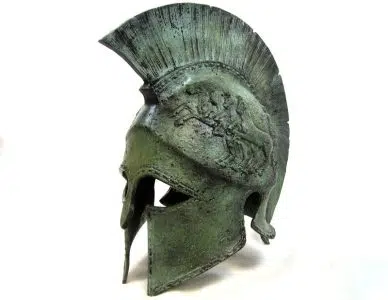


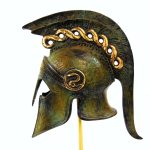
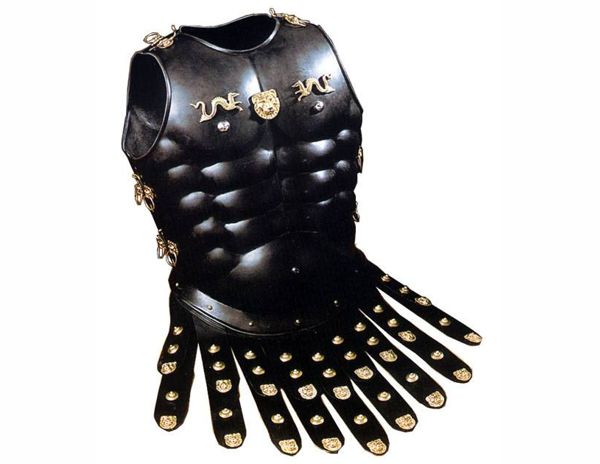

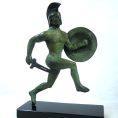
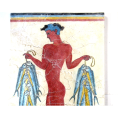


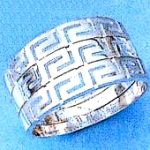
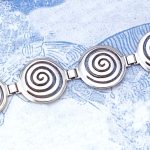
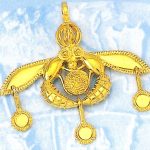
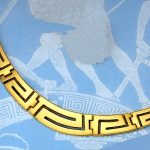
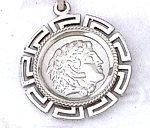

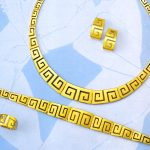
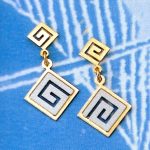
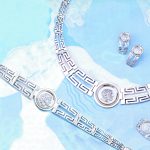
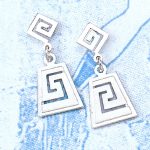



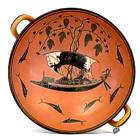





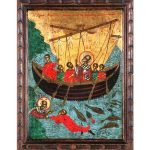
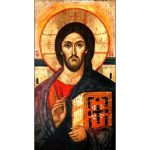
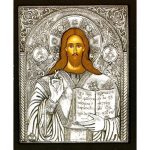
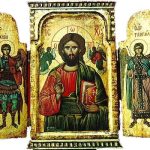




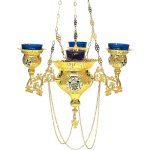










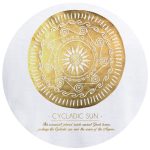

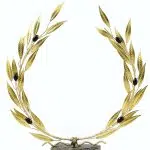

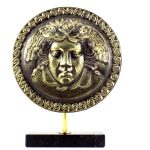

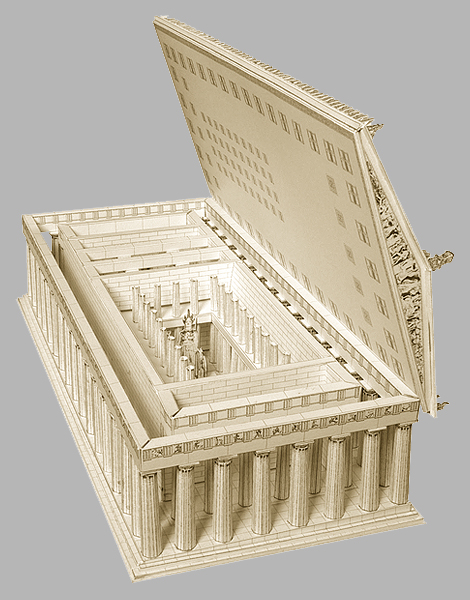





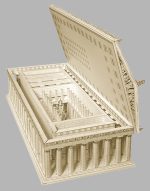







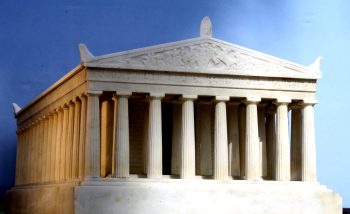



Reviews
There are no reviews yet.